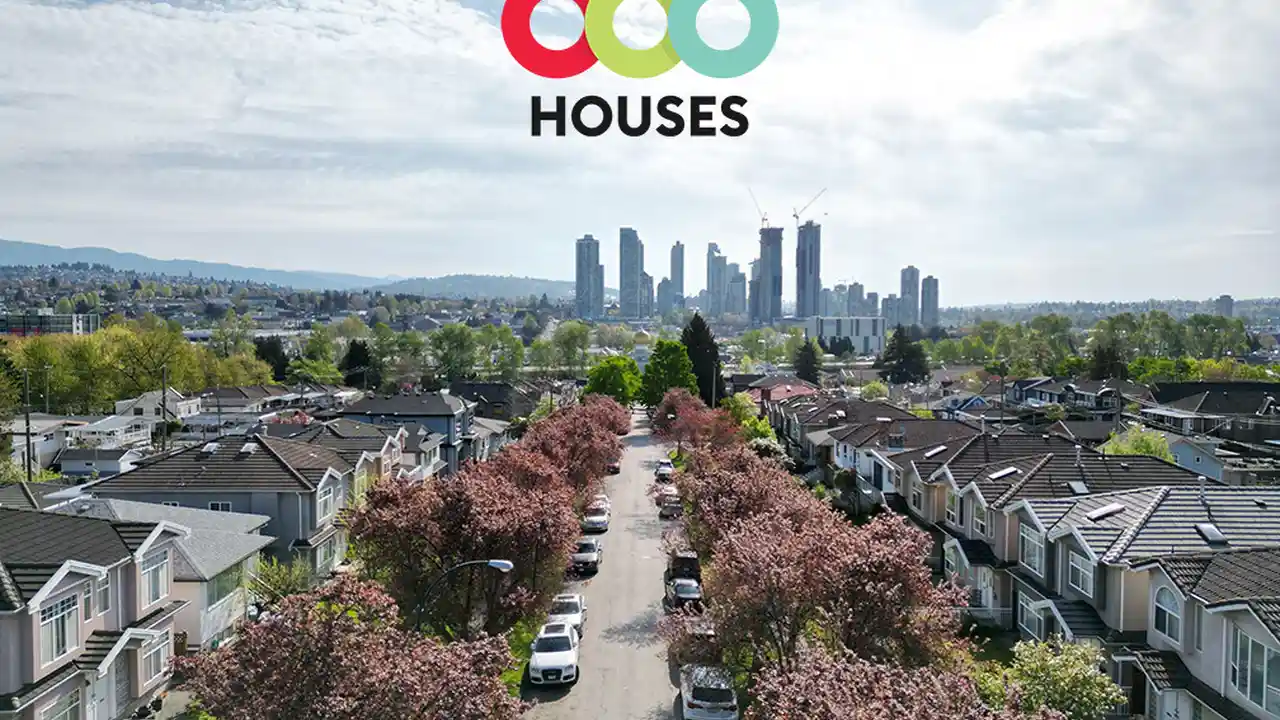Comparing Urban vs Suburban Living Pros and Cons
Explore the advantages and disadvantages of urban versus suburban living to find your ideal modern lifestyle.

Explore the advantages and disadvantages of urban versus suburban living to find your ideal modern lifestyle.
Urban vs Suburban Living Your Ideal Modern Lifestyle
Hey there! Ever found yourself daydreaming about where you truly belong? Maybe you’re a city slicker at heart, thriving on the hustle and bustle, or perhaps the thought of a quiet, tree-lined street in the suburbs makes your soul sing. Choosing between urban and suburban living is a massive decision, one that impacts everything from your daily commute to your social life, and even your wallet. It’s not just about picking a place to live; it’s about defining your lifestyle. So, let’s dive deep into the nitty-gritty of both, weighing the pros and cons, and helping you figure out which one truly aligns with your modern living aspirations.
The Allure of Urban Living City Life Explained
Ah, the city! The vibrant energy, the endless possibilities, the feeling that something exciting is always just around the corner. Urban living, especially in major hubs like New York, London, or Singapore, offers a unique blend of convenience, culture, and career opportunities. But what exactly makes it tick, and what are the trade-offs?
Urban Living Pros Convenience Culture and Career
First off, convenience is king in the city. Think about it: world-class restaurants, trendy cafes, grocery stores, and even your workplace are often just a short walk, bike ride, or subway trip away. Forget about long commutes stuck in traffic; in many urban centers, you can ditch the car entirely. This not only saves you money on gas and maintenance but also frees up a ton of time.
Then there’s the culture. Museums, theaters, art galleries, live music venues – cities are cultural melting pots. You’ll have access to a diverse range of entertainment options, often within minutes of your doorstep. Want to catch a Broadway show tonight? No problem. Craving authentic Ethiopian food at 11 PM? You got it. The sheer variety of experiences is unparalleled.
Career opportunities are another huge draw. Major cities are often economic powerhouses, home to headquarters of multinational corporations, innovative startups, and a vast network of professionals. If you’re looking to climb the corporate ladder, switch industries, or simply expand your professional network, the city offers a fertile ground for growth.
Social life? Oh, it’s buzzing! From rooftop bars to bustling nightclubs, community events to niche interest groups, there are countless ways to meet new people and build connections. The diversity of people and ideas can be incredibly stimulating and enriching.
Urban Living Cons Cost Noise and Space Constraints
Now, let’s talk about the flip side. The biggest elephant in the room when it comes to urban living is undoubtedly the cost. Housing prices, whether you’re renting or buying, are significantly higher in cities. A small apartment in a prime urban location can easily cost more than a spacious house in the suburbs. This high cost of living extends beyond rent to groceries, transportation, and even everyday services.
Noise is another common complaint. Sirens, traffic, construction, late-night revelers – cities are rarely quiet. If you’re someone who craves peace and quiet, the constant hum of urban life can be a real challenge. And let’s not forget about space. Urban dwellings are typically smaller, with less outdoor space. If you dream of a sprawling backyard or a large living area, you might find city apartments a bit cramped.
Parking can be a nightmare, and even if you don’t own a car, public transport can be crowded and sometimes unreliable. While convenience is a pro, the sheer density of people can also lead to feelings of being overwhelmed or a lack of personal space.
Suburban Serenity The Appeal of Quiet Neighborhoods
Stepping out of the city, we enter the realm of the suburbs. These areas, often surrounding major cities, offer a different pace of life – one that many find more appealing, especially for raising families or simply enjoying a quieter existence.
Suburban Living Pros Space Safety and Community
The most immediate advantage of suburban living is space. You typically get more bang for your buck when it comes to housing, meaning larger homes, bigger yards, and more room to breathe. This is a huge plus for families with children or pets, or anyone who simply enjoys having more personal space.
Safety is another significant factor. Suburban neighborhoods generally have lower crime rates compared to urban areas, offering a greater sense of security and peace of mind. This can be particularly important for parents concerned about their children’s well-being.
Community spirit often thrives in the suburbs. Think neighborhood block parties, local school events, and active homeowner associations. People tend to know their neighbors, and there’s a stronger sense of collective identity and support. This can lead to a more stable and nurturing environment.
Access to nature is also a big draw. Suburban areas often boast more parks, green spaces, and recreational facilities. If you love hiking, biking, or simply enjoying the outdoors, the suburbs can offer a refreshing escape from the concrete jungle.
Suburban Living Cons Commute Limited Options and Car Dependency
The biggest downside to suburban living for many is the commute. While you might enjoy a quieter home life, getting to work in the city often involves longer drives, traffic jams, and reliance on a car. This can eat into your day and add significant costs in terms of gas and vehicle maintenance.
Compared to cities, suburban areas often have fewer public transportation options, making car dependency almost a necessity. This can be a barrier for those who prefer not to drive or for households looking to reduce their carbon footprint.
Entertainment and dining options can also be more limited. While suburbs have their own local amenities, they typically can’t compete with the sheer variety and diversity found in major urban centers. You might find yourself driving into the city for specific cultural events or unique dining experiences.
Job opportunities, while present, might not be as diverse or plentiful as in a major city, especially if you’re in a highly specialized field. This can sometimes necessitate a longer commute or limit career growth options within the immediate vicinity.
Key Considerations for Your Lifestyle Decision Making Factors
So, how do you decide? It’s not a one-size-fits-all answer. Your ideal choice depends heavily on your personal priorities, life stage, and financial situation. Let’s break down some key factors to consider.
Financial Implications Housing Costs and Budgeting
This is often the deal-breaker. As we discussed, urban housing is significantly more expensive. When budgeting, don’t just look at rent or mortgage payments. Factor in property taxes, utilities, transportation costs (car vs. public transport), and even the general cost of goods and services. Sometimes, a lower rent in the suburbs might be offset by higher transportation costs or vice versa. Do a thorough cost-of-living analysis for both scenarios.
Commute and Transportation Daily Travel Time
How much time are you willing to spend commuting each day? For some, a 30-minute drive is perfectly acceptable, while others prefer a 10-minute walk. Consider the impact of your commute on your work-life balance, stress levels, and overall well-being. If you rely on public transport, research the availability and efficiency of services in both urban and suburban areas you’re considering.
Lifestyle and Preferences Social Life and Activities
Are you a social butterfly who thrives on constant activity and new experiences? Or do you prefer quiet evenings at home, perhaps with a small circle of friends? Do you enjoy spontaneous outings to museums and concerts, or do you prefer planned activities like hiking or gardening? Your personal preferences for social interaction, entertainment, and leisure activities should heavily influence your decision.
Family and Education Schools and Child Friendly Amenities
If you have children or plan to, schools become a paramount concern. Suburban areas are often known for their highly-rated public school systems. Research school districts, extracurricular activities, and child-friendly amenities like parks, playgrounds, and community centers. Consider the safety of the neighborhood and the availability of childcare options.
Career Opportunities Job Market and Industry Growth
Where are the jobs in your field? Are they concentrated in urban centers, or are there opportunities in suburban business parks? Consider your long-term career goals. If your industry is rapidly evolving and requires constant networking, an urban environment might be more beneficial. If you’re in a field that allows for remote work or has a strong presence in suburban areas, your options open up considerably.
Hybrid Living The Best of Both Worlds
What if you can’t decide? Or what if you want a bit of everything? That’s where hybrid living comes in. Many people are finding creative ways to blend the advantages of urban and suburban life.
Commuter Towns and Outer Suburbs Balancing Act
Consider living in a commuter town or an outer suburb that offers a good balance. These areas are often more affordable than inner-city neighborhoods but still provide relatively easy access to urban amenities via public transport or a manageable drive. You might get a larger home and a quieter environment while still being able to enjoy city life on weekends.
Work From Home Flexibility Remote Work Benefits
The rise of remote work has been a game-changer for many. If your job allows you to work from home, your geographical constraints significantly loosen. You could live in a more affordable suburban area and still maintain a city-based job, only commuting in for occasional meetings or team events. This offers immense flexibility and can lead to a better work-life balance.
Specific Product Recommendations for Hybrid Living
To make hybrid living even smoother, here are a few product recommendations that can enhance your experience, whether you're commuting or enjoying your suburban haven:
1. Noise-Cancelling Headphones for Commutes and Focus
Product: Sony WH-1000XM5
Use Case: Essential for blocking out the noise of a busy train, bus, or even a bustling coffee shop if you're working remotely. They also provide excellent audio quality for music or podcasts, making your commute more enjoyable.
Comparison: While Bose QuietComfort Earbuds II are also excellent for noise cancellation, the Sony WH-1000XM5 often wins on overall sound quality and comfort for extended wear. Apple AirPods Max offer premium sound and seamless Apple ecosystem integration but come at a higher price point.
Price: Around $350-$400 USD.
2. Smart Home Security System for Peace of Mind
Product: Ring Alarm Pro (with Eero Wi-Fi 6 router)
Use Case: Perfect for suburban homes, offering comprehensive security with motion sensors, door/window sensors, and professional monitoring options. The integrated Eero router provides robust Wi-Fi coverage, crucial for smart home devices and remote work.
Comparison: SimpliSafe offers a more DIY-friendly setup and no-contract monitoring, while Arlo Pro 4 focuses heavily on high-quality wireless cameras. Ring's integration with Amazon Alexa and its comprehensive ecosystem often makes it a strong contender for overall home security.
Price: Starter kits range from $250-$300 USD, with monitoring plans extra.
3. Electric Bikes for Local Commutes and Errands
Product: Rad Power Bikes RadCity 5 Plus
Use Case: Ideal for short to medium commutes within the suburbs, running errands, or even getting to a local train station. They make hills effortless and allow you to carry groceries or a work bag with ease, reducing reliance on a car.
Comparison: Aventon Pace 500.3 offers a lighter frame and more integrated battery, while Specialized Turbo Vado SL 4.0 is a premium option with a sleeker design and higher price. Rad Power Bikes are known for their robust build, affordability, and utility.
Price: Around $1,800-$2,000 USD.
4. High-Quality Coffee Machine for Home Comfort
Product: Breville Barista Express Impress
Use Case: If you're spending more time at home in the suburbs, a good coffee machine can elevate your daily routine and save you money on cafe visits. This model offers a semi-automatic experience, allowing you to craft barista-quality drinks.
Comparison: The De'Longhi Dedica Arte is a more compact and budget-friendly option for espresso, while the Jura ENA 4 is a fully automatic machine for ultimate convenience but at a higher cost. The Breville strikes a good balance between control and ease of use.
Price: Around $800-$900 USD.
5. Ergonomic Home Office Setup for Remote Work Productivity
Product: FlexiSpot E7 Standing Desk and Herman Miller Aeron Chair
Use Case: For those working remotely, investing in a comfortable and ergonomic home office setup is crucial for productivity and health. A standing desk encourages movement, and a high-quality chair supports good posture.
Comparison: For standing desks, Uplift Desk V2 is another popular choice offering great stability and customization. For chairs, the Steelcase Gesture is a strong competitor to the Aeron, offering excellent adjustability. Budget-friendly options exist, but for long-term comfort and health, these premium choices are often worth the investment.
Price: FlexiSpot E7 around $400-$600 USD (frame only), Herman Miller Aeron Chair around $1,500-$2,000 USD.
Making the Right Choice Personal Journey
Ultimately, the decision between urban and suburban living is deeply personal. There’s no right or wrong answer, only the best fit for you and your unique circumstances. Take the time to reflect on what truly matters to you: is it the vibrant energy of the city, the quiet comfort of the suburbs, or a blend of both?
Consider visiting both types of areas you’re interested in. Spend a weekend in a city neighborhood, and then another in a suburban community. Talk to residents, explore local amenities, and even try out a mock commute. This firsthand experience can provide invaluable insights that online research simply can’t.
Remember, life stages change. What works for you in your 20s might not be ideal in your 30s or 40s. Be open to the possibility that your needs and preferences might evolve over time. The most important thing is to choose a living situation that supports your well-being, happiness, and allows you to thrive in your modern lifestyle.
Whether you choose the bustling streets of the city or the peaceful lanes of the suburbs, make it a place where you feel at home, where you can grow, and where you can truly live your best life.
:max_bytes(150000):strip_icc()/277019-baked-pork-chops-with-cream-of-mushroom-soup-DDMFS-beauty-4x3-BG-7505-5762b731cf30447d9cbbbbbf387beafa.jpg)






